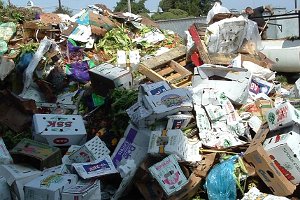 Transforming food waste into energy could be a good investment, both environmentally and economically.
Transforming food waste into energy could be a good investment, both environmentally and economically.
When I first considered reporting on a food scraps to energy program I wasn't really thinking of the smells I would encounter. Granted it's not nearly as bad as raw sewage, but 25 tons of decomposing food can pack a punch. Then I saw the sludge and thought what a nightmare for folks who can't stand their foods mingling on the dinner plate. Fortunately, I have a strong stomach.
The story intrigued me because it seemed like converting food waste to methane for energy use was a no- brainer. Why isn't everyone doing this? So far the program, run by the East Bay Municipal Utility District, seems like a success but as it turns out there are a few challenges, which may explain why it's not so widespread.
First, the wastewater plant in Oakland has to deal with non-organic items that accidentally wind up in restaurant green bins, such as forks, plastic wrap, even pennies. These pesky interlopers damage grinders and other machinery and are a constant and costly headache for the utility. That's why the agency wants more control over the sorting and is planning to bring the process on site. Right now the haulers and the restaurants control the pre-sorting process.
Then there's the question of how easy this program can be replicated at other wastewater plants. The East Bay facility already had the infrastructure and capacity to take on this program. It's investing to expand it, but some plants don't even have these anaerobic digesters and those that do may or may not have the ability to produce electricity. This could well require costly investments in tough economic times.
